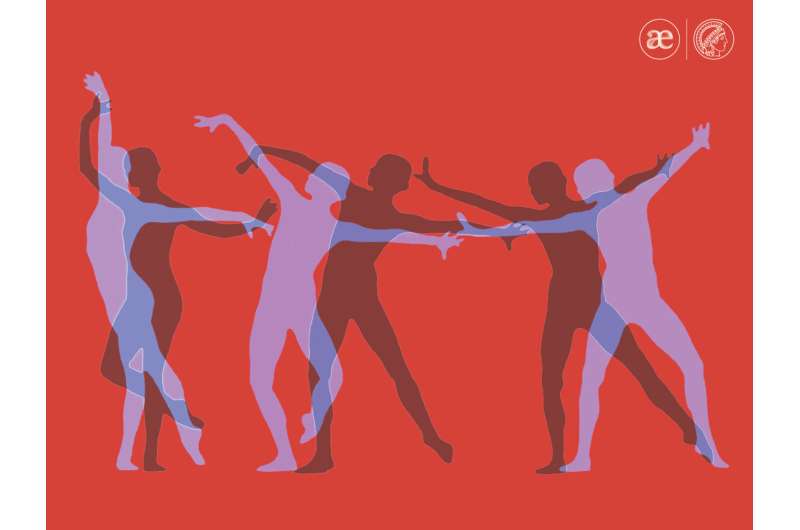This article has been reviewed according to Science X's editorial process and policies. Editors have highlighted the following attributes while ensuring the content's credibility:
fact-checked
peer-reviewed publication
trusted source
proofread
A dance of emotions: Scientific video library of dance movements published

People express their emotions through different channels: the face, the voice, and the body. Yet, research on emotion perception still largely focuses on recognizing emotions in the face. An interdisciplinary research team led by the Max Planck Institute for Empirical Aesthetics in Frankfurt am Main (MPIEA) has now published a video library of emotionally expressive full-body movements. The associated study has just been published in the journal Scientific Reports.
The library contains a total of 150 video clips. A professional dancer performed 30 sequences of movements, each of them five times, expressing a different emotion at every repetition: joy, anger, fear, sadness, and a neutral state. The research team deliberately refrained from including emotional actions such as jumping for joy or recoiling in fear. The videos are each six seconds long and show the dancer as a white silhouette against a black background.
"Previous video libraries show simple walking or throwing actions, where a person walks happily or sadly, for example," explains the first author of the study, Julia F. Christensen of the MPIEA. "Our dance movements are more complex compared to such everyday movements, which opens up expanded possibilities for researchers."
The team tested the video clips on 90 participants, with the majority recognizing the intended emotions. In a second task, the participants were asked to rate how beautiful they found the movements—regardless of which emotions they guessed to be behind them. The researchers found that movements that were supposed to express joy or anger were rated as the most beautiful. Overall, all movement sequences that were supposed to reflect emotions were rated as more beautiful than the neutral dance sequences. The participants thus reacted to the emotional expression, even without focusing on the intended emotion itself.
A large international and interdisciplinary team was involved in the realization of the project, including scientists from various research institutions, a team from 3Fish Corporate Filmmaking in Istanbul, Turkey, as well as representatives from Pfalztheater Kaiserslautern. Luisa Sancho Escanero, artistic director at Pfalztheater Kaiserslautern, summarizes, "To realize the new video library, scientists, dancers, and filmmakers worked hand in hand. The result is a collective work that can now also be used in various disciplines." The clips can be used in scientific research on dance, emotional psychology, affective neuroscience, and empirical aesthetics, among others.
More information: Julia F. Christensen et al, A 5-emotions stimuli set for emotion perception research with full-body dance movements, Scientific Reports (2023). DOI: 10.1038/s41598-023-33656-4




















